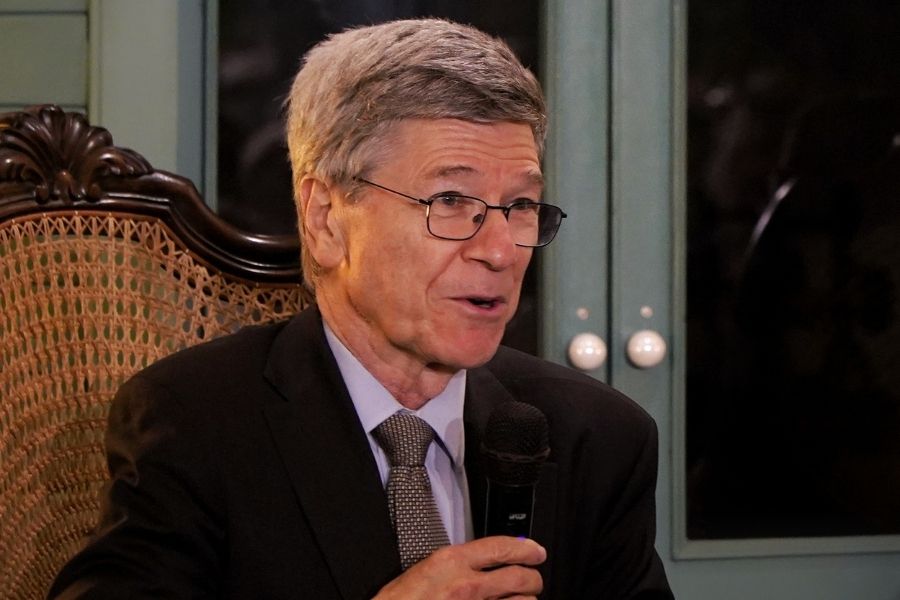Ukraine and the United States on Wednesday signed a deal heavily promoted by U.S. President Donald Trump that will give the United States preferential access to new Ukrainian minerals deals and fund investment in Ukraine's reconstruction.
The following is an overview of the critical minerals, including rare earths, and other natural resources in Ukraine:
WHAT ARE RARE EARTHS AND WHAT ARE THEY USED FOR?
Rare earths are a group of 17 metals used to make magnets that turn power into motion for electric vehicles, cell phones, missile systems, and other electronics. There are no viable substitutes.
The U.S. Geological Survey considers 50 minerals to be critical, including rare earths such as nickel and lithium.
Critical minerals are essential for industries such as defence, high-tech appliances, aerospace and green energy.
WHAT MINERAL RESOURCES DOES UKRAINE HAVE?
Ukraine has deposits of 22 of the 34 minerals identified by the European Union as critical, according to Ukrainian data. They include industrial and construction materials, ferro alloy, precious and non-ferrous metals, and some rare earth elements.
According to Ukraine's Institute of Geology, the country possesses rare earths such as lanthanum and cerium, used in TVs and lighting; neodymium, used in wind turbines and EV batteries; and erbium and yttrium, whose applications range from nuclear power to lasers. EU-funded research also indicates that Ukraine has scandium reserves. Detailed data is classified.
The World Economic Forum has said Ukraine is also a key potential supplier of lithium, beryllium, manganese, gallium, zirconium, graphite, apatite, fluorite and nickel.
The State Geological Service said Ukraine has one of Europe's largest confirmed reserves, estimated at 500,000 metric tons, of lithium - vital for batteries, ceramics, and glass.
The country has titanium reserves, mostly located in its northwestern and central regions, while lithium is found in the centre, east and southeast.
Ukraine's reserves of graphite, a key component in electric vehicle batteries and nuclear reactors, represent 20% of global resources. The deposits are in the centre and west.
Ukraine also has significant coal reserves, though most are now under the control of Russia in occupied territory.
Mining analysts and economists say Ukraine currently has no commercially operational rare earth mines.
China is the world's largest producer of rare earths and many other critical minerals.
WHAT DO WE KNOW ABOUT THE DEAL?
The two countries signed the accord in Washington after months of sometimes fraught negotiations, with uncertainty persisting until the last moment with word of an eleventh-hour snag.
The accord establishes a joint investment fund for Ukraine's reconstruction as Trump tries to secure a peace settlement in Russia's three-year-old war in Ukraine.
U.S. Treasury Secretary Scott Bessent and Ukrainian First Deputy Prime Minister Yulia Svyrydenko were shown signing the agreement in a photo posted on X by the Treasury, which said the deal "clearly signals the Trump Administration's commitment to a free, sovereign, prosperous Ukraine."
Svyrydenko wrote on X that the accord provides for Washington to contribute to the fund. She also said the accord provides for new assistance, for example air defense systems for Ukraine. The U.S. did not directly address that suggestion.
Svyrydenko said the accord allowed Ukraine to "determine what and where to extract" and that its subsoil remains owned by Ukraine.
Svyrydenko said Ukraine has no debt obligations to the United States under the agreement, a key point in the lengthy negotiations between the two countries. It also complied with Ukraine's constitution and Ukraine's campaign to join the European Union, she said.
The draft did not provide any concrete U.S. security guarantees for Ukraine, one of its initial goals.
WHICH UKRAINIAN RESOURCES ARE UNDER KYIV'S CONTROL?
The war has caused widespread damage across Ukraine, and Russia now controls around a fifth of its territory.
The bulk of Ukraine’s coal deposits, which powered its steel industry before the war, are concentrated in the east and have been lost.
About 40% of Ukraine's metal resources are now under Russian occupation, according to estimates by Ukrainian think-tanks We Build Ukraine and the National Institute of Strategic Studies, citing data up to the first half of 2024. They provided no detailed breakdown.
Since then, Russian troops have continued to advance steadily in the eastern Donetsk region. In January, Ukraine closed its only coking coal mine outside the city of Pokrovsk, which Moscow's forces are trying to capture.
Russia has occupied at least two Ukrainian lithium deposits during the war - one in Donetsk and another in the Zaporizhzhia region in the southeast. Kyiv still controls lithium deposits in the central Kyrovohrad region.
WHAT OPPORTUNITIES DOES UKRAINE OFFER?
Oleksiy Sobolev, first deputy economy minister, said in January that the government was working on deals with Western allies including the United States, Britain, France and Italy on projects related to exploiting critical materials. The government estimates the sector's total investment potential at about $12-15 billion by 2033.
The State Geological Service said the government was preparing about 100 sites to be jointly licensed and developed but provided no further details.
Although Ukraine has a highly qualified and relatively inexpensive labour force and developed infrastructure, investors highlight a number of barriers to investment. These include inefficient and complex regulatory processes as well as difficulty accessing geological data and obtaining land plots.
Such projects would take years to develop and require considerable up-front investment, they said.










